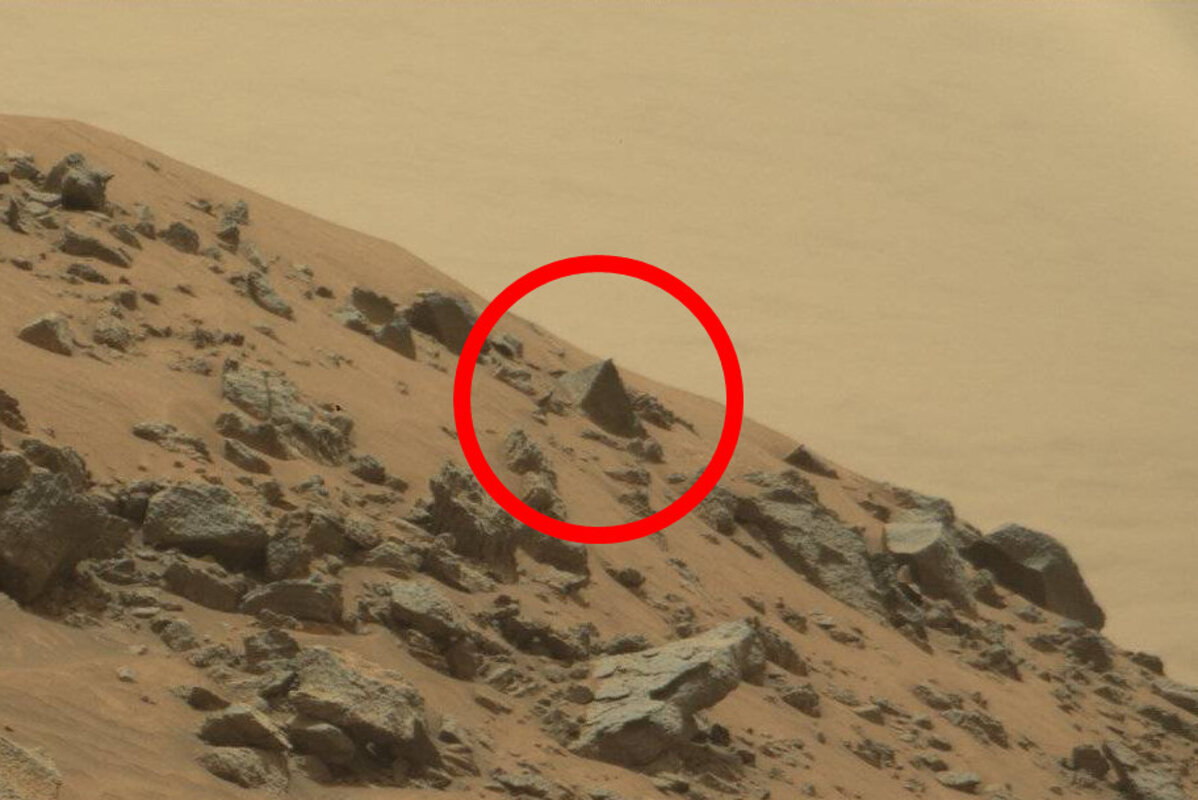Mars pyramid: Alien structure or everyday pareidolia?
Loading...
Are there pyramids on Mars? Or is it just one pyramid-shaped rock?
On May 7, NASA's took a snapshot of an atypical stone on the Red Planet.
A raw image from the mission that appears to be pyramid-shaped, leading some to speculate that it may be the result of intelligent sculptors. NASA, for its part, says it's just an ordinary rock.
Jim Bell, a member of NASA's Mars Rover Explanation Team that the object was unlikely to be man- or alien-made, adding that rock formations which look like recognizable objects are very common.
But that hasn't stopped people from speculating about its origin or design. "I would theorize that the [artifact] is either the capstone of a much larger pyramid, possibly buried deep beneath the surface, or perhaps a marker stone," says a robotic narrator in uploaded by a user called Paranormal Crucible.
Writing for the website Exopolitics.org, Dr. Michael Salla that NASA deliberately took pains to prevent showing other views of the object to the public in subsequent photos.
Or is it just a rock, as NASA says?
Perhaps interpretations of the object as a man-made structure are driven by our own expectations. A well-known psychological phenomenon known as pareidolia can cause people to interpret random images as significant or meaningful.
A published by Japanese palaeontologist Chonosuke Okamura in the 1970s and '80s demonstrate the dangers of interpretations resulting from pareidolia. Mr. Okamura described finding ancient fossils of dogs, fish, birds and men, all at tiny sizes, leading him to conclude that modern body shapes existed in ancient times, but at 1/350th scale. Okamura was awarded the 1996 for his research.
American astronomer and author Carl Sagan argues that pareidolia evolved as a survival tool that allowed humans to recognize faces from a distance or in the dark. The instinct was vital to identifying friend or foe, but Dr. Sagan noted that it could cause people to misinterpret patterns.
And don't underestimate the power of expectations, says Sophie Scott, professor of neuroscience at the University College London. "Being able to see Jesus's face in toast is telling you more about what's happening with your expectations, and how you're interpreting the world based on your expectations, rather than anything that's necessarily in the toast," Dr. Scott .
In other words, seeing a pyramid on Mars, instead of just a funny-shaped rock, could tell us more about our expectations of life in Mars than anything about actual Martian history.




